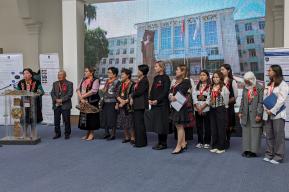News
UNESCO project on glacial outburst floods in Central Asia sums up its first year

From October 31 to November 1, Almaty hosted a second regional exchange workshop of the “Reducing vulnerabilities of populations in the Central Asia region from glacier lake outburst floods in a changing climate (GLOFCA)” project.
The workshop’s theme was “Assessment of downstream GLOF hazard and community hazard mapping.”
Leading researchers and experts in the field of disaster risk management from around the world, as well as representatives of ministries of emergencies from Central Asia and international organizations attended the event.
In addition to the theoretical part, we also paid attention to the training component. Based on a needs assessment and capacity building that was conducted with national partners, as well as through surveys, we formulated themes and conducted webinars and trainings for experts in the field of reducing vulnerability to glacial lake outbursts.
Natalia Kim, Project Specialist of the UNESCO Almaty Cluster Office for Kazakhstan, Kyrgyzstan, Tajikistan and Uzbekistan
Due to glacier melting and lake formation across Central Asia, there is an increased risk of Glacier Lake Outburst Floods (GLOFs), which confound and exacerbate water-related threats to mountain communities, their settlements, and livelihoods. GLOFs also threaten populations, livelihoods and infrastructure located in river floodplains and downstream areas.
The UNESCO Office in Almaty, together with the Republic of Kazakhstan, the Kyrgyz Republic, the Republic of Tajikistan and the Republic of Uzbekistan developed the GLOFCA project funded by the Adaptation Fund. The University of Zurich, Switzerland, serves as the main implementing partner of the Project.
The GLOFCA project aims to strengthen monitoring, analytical capacity, and the response capacity of institutions and government officials responsible for disaster risk reduction, emergency and climate change adaptation through community-based and gender-sensitive education and communication, and by establishing early warning systems supported by the necessary monitoring strategies.








